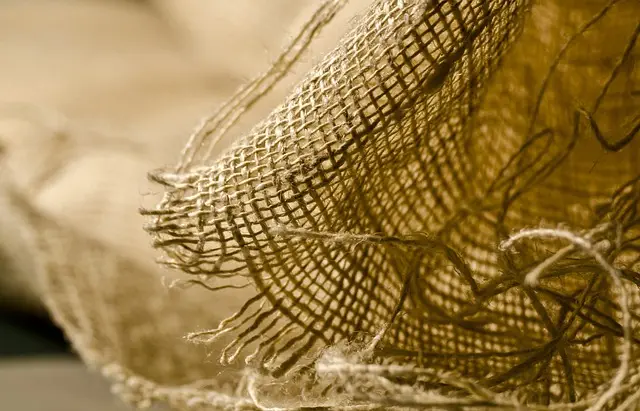Muscle soreness, particularly delayed-onset muscle soreness (DOMS), often results from intense or new physical activities and is influenced by exercise parameters, individual fitness levels, and proper warm-up practices. For natural relief of this discomfort, White Maeng Da and White Bali kratom strains are increasingly being considered due to their potential analgesic effects. White Maeng Da is known for its energizing and stimulating properties that support a positive mindset during recovery, while White Bali offers a combination of sedative and energizing qualities, adapting to the user's needs without causing excessive energy or drowsiness. Both strains contain alkaloids like mitraphylline and 7-hydroxymitragynine that interact with opioid receptors for pain relief. White Maeng Da is celebrated for its balanced alkaloid profile, offering a clear-headed stimulation, whereas White Bali has a finer vein powder that provides a more sustained energizing and comforting effect. It's crucial to consult healthcare professionals before incorporating kratom into any health regimen due to potential interactions with other medications or health conditions. When comparing White Maeng Da versus White Bali, individuals should consider their specific muscle soreness needs and personal preferences, as both offer unique advantages for pain management and overall well-being.
Muscle soreness can be a persistent issue for those who push their physical limits, whether through intense exercise, athletic training, or daily physical labor. The discomfort can impede recovery and affect performance. This article explores the potential of kratom supplements, particularly White Maeng Da and White Bali strains, as natural remedies to alleviate muscle soreness. We will delve into the causes of muscle soreness, examining how these kratom varieties may provide relief through their distinct properties. Subsequently, we’ll compare the analgesic effects of White Maeng Da and White Bali, offering insight into which might be more effective for your specific needs. Understanding the nuances between these strains can empower you to make informed decisions about incorporating them into your post-exercise recovery routine.
- Understanding Muscle Soreness and Its Causes
- Kratom Supplements as a Natural Remedy for Muscle Soreness
- White Maeng Da vs. White Bali Kratom: An Overview of Their Properties
- Effective Relief Strategies Using White Maeng Da and White Bali Kratom
- Comparing the Analgesic Effects of White Maeng Da and White Bali for Muscle Soreness Relief
Understanding Muscle Soreness and Its Causes

Muscle soreness, commonly referred to as delayed-onset muscle soreness (DOMS), is a common experience among individuals who engage in physical activities, especially those involving unaccustomed or intense exercise. This phenomenon occurs when muscles are subjected to stresses beyond their usual routine, leading to microscopic tears in the muscle fibers. The body then responds to repair these fibers, which can result in temporary discomfort and inflammation. Understanding the causes of muscle soreness is crucial for effective management and recovery.
Factors such as intensity, frequency, and duration of exercise, as well as the individual’s level of conditioning, play significant roles in muscle soreness. Inadequate warm-up or improper technique can also contribute to the onset of soreness. For those exploring natural supplements for muscle soreness relief, kratom, particularly the strains white Maeng Da and white Bali, has gained attention due to its potential analgesic properties. White Maeng Da is known for its energetic and stimulating effects, which may help in maintaining a positive attitude and work ethic during recovery periods. On the other hand, White Bali kratom is appreciated for its balanced sedative and energizing effects, making it a versatile option that could potentially aid in managing muscle discomfort without overwhelming the user with excessive energy or drowsiness. Both strains are often used interchangeably, with individuals choosing one over the other based on their personal experiences and preferences. It’s important to consult with healthcare professionals before incorporating kratom into any health regimen to ensure safety and efficacy.
Kratom Supplements as a Natural Remedy for Muscle Soreness

Kratom supplements have garnered attention as a natural remedy for muscle soreness, particularly among individuals seeking alternatives to traditional pain relief methods. Extracted from the leaves of the Mitragyna speciosa tree native to Southeast Asia, kratom contains alkaloids that interact with the body’s opioid receptors, potentially offering pain-relieving effects. For those experiencing muscle soreness, whether from intense exercise, physical labor, or other causes, kratom can be a compelling option due to its dual action as both a stimulant and a sedative, depending on the dosage. Two popular strains within the kratom spectrum that are often highlighted for their potential efficacy in addressing muscle soreness are White Maeng Da and White Bali.
White Maeng Da is renowned for its balanced alkaloid profile, which may contribute to a stimulating effect that can help relieve pain without causing drowsiness. This strain is particularly potent, making it a favored choice for those requiring significant muscle soreness relief. On the other hand, White Bali kratom is celebrated for its fine vein powder that offers a more subtle yet still invigorating experience. It’s often recommended for its potential to promote a sense of well-being and energy, which can be beneficial when the muscle discomfort is coupled with lethargy or fatigue. Both strains have their advocates, and the choice between White Maeng Da and White Bali may come down to individual preference and the specific nature of the muscle soreness being addressed. As with any supplement, it’s important to consult with a healthcare professional before incorporating kratom into your regimen, especially if you have pre-existing health conditions or are taking other medications.
White Maeng Da vs. White Bali Kratom: An Overview of Their Properties

White Maeng Da and White Bali are two distinct strains within the realm of kratom supplements, each offering unique properties that can contribute to muscle soreness relief. White Maeng Da, often referred to as “Pimp Grade,” is renowned for its invigorating effects and balanced alkaloid profile, which may include mitraphylline and 7-hydroxymitragynine. This combination can provide a stimulating effect that is both energizing and soothing, potentially aiding in the management of muscle soreness while maintaining mental clarity. Its efficacy has led it to be a popular choice among users seeking natural relief from discomfort without the sedative properties associated with some kratom strains.
On the other hand, White Bali Kratom is known for its fine vein powder that is thought to deliver consistent effects due to its homogeneity. This strain may contain alkaloids such as mitraphylline and 7-hydroxymitragynine, though typically in different proportions compared to White Maeng Da. The experience with White Bali can range from promoting an uplifted mood and increased energy levels to offering a comforting effect on the body, which may be beneficial for individuals experiencing muscle soreness. Its balanced alkaloid content may contribute to its reputation as a versatile strain suitable for various needs throughout the day. Both strains are distinct in their properties and potential applications, making them valuable options for those exploring kratom for muscle soreness relief. Users often experiment with these strains to determine which one aligns better with their specific requirements and preferences.
Effective Relief Strategies Using White Maeng Da and White Bali Kratom

When exploring effective relief strategies for muscle soreness, two potent kratom strains stand out for their potential benefits: White Maeng Da and White Bali. Both strains are derived from the Mitragyna speciosa plant but exhibit distinct properties that can aid in managing discomfort. White Maeng Da, known for its balanced alkaloid profile, is celebrated for its stimulating yet soothing effects. It is often preferred by individuals seeking a blend of energy and pain relief without the sedative aftereffects commonly associated with other strains. This strain’s ability to interact with the body’s opioid receptors may contribute to its analgesic properties, making it a popular choice for those experiencing muscle soreness from intense physical activities or chronic pain conditions.
In contrast, White Bali Kratom is prized for its powerful pain-relieving capabilities. It is cultivated on the Indonesian island of Bali and is known for its fine veins that run through the leaves, contributing to its efficacy. Users often report that White Bali provides a more immediate and potent analgesic effect, which can be particularly beneficial for acute muscle soreness. The alkaloids present in this strain, such as mitraphylline and 7-hydroxymitragynine, are thought to play a role in its analgesic and mood-enhancing effects. Both White Maeng Da and White Bali kratom strains offer unique advantages for those looking to alleviate muscle soreness; however, it is crucial to use these supplements responsibly and within the recommended dosages to avoid adverse side effects. Always consult with a healthcare professional before incorporating kratom into your wellness routine, especially if you have underlying health conditions or are taking other medications.
Comparing the Analgesic Effects of White Maeng Da and White Bali for Muscle Soreness Relief

White Maeng Da and White Bali, two popular strains of kratom, have long been recognized for their potential analgesic effects. When it comes to addressing muscle soreness, both strains offer unique benefits that can aid in providing relief. White Maeng Da is celebrated for its energetic and stimulating properties, coupled with a potent analgesic profile. It contains a higher concentration of 7-hydroxymitragynine, an alkaloid believed to contribute significantly to kratom’s painkilling effects. This strain may be particularly effective for those experiencing acute muscle soreness, as it can help manage discomfort while promoting a sense of well-being and vitality.
In contrast, White Bali kratom is known for its smooth and balanced effects, offering a broad spectrum of benefits that also encompass pain relief. The alkaloid profile in White Bali includes mitragynine and 7-hydroxymitragynine, though typically in different ratios than Maeng Da. This can make it a suitable option for individuals seeking relief from both acute and chronic muscle soreness. White Bali’s effect is often characterized as more subtle and long-lasting, providing a steady state of comfort without the intense stimulation that some may find overwhelming. Users often report that this strain helps them maintain a positive mood while their muscles recover and heal. When comparing White Maeng Da versus White Bali for muscle soreness relief, it’s clear that both have their merits; however, the choice between them may come down to personal preference, the specific type of soreness, and the desired balance of energy and pain relief.
In conclusion, muscle soreness can be a common and sometimes disruptive experience for individuals engaging in physical activities. Exploring natural remedies such as kratom supplements presents an alternative to conventional pain relief methods. Among the various strains, White Maeng Da and White Bali stand out for their analgesic properties. Each strain offers distinct benefits; White Maeng Da is recognized for its invigorating and energizing effects, while White Bali is appreciated for its well-rounded and calming influence. By understanding the nuances of these strains and employing them strategically, individuals can find effective relief from muscle soreness. For those seeking a natural approach to managing post-exercise discomfort, considering the therapeutic potential of White Maeng Da and White Bali kratom may be a worthwhile step. As always, it is advisable to consult with healthcare professionals before integrating any new supplement into your wellness regimen.






